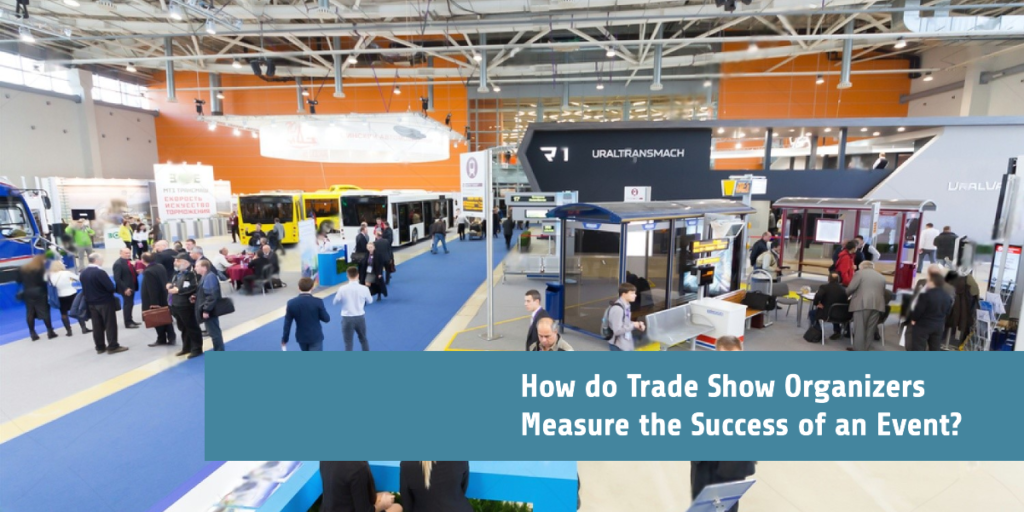Trade shows are a whirlwind of energy, packed with exciting products, informative talks, and (hopefully) tons of interested attendees. But for the organizers, the real question is: Did it live up to the hype? This blog will pull back the curtain and reveal how trade show organizers measure success. We’ll explore the metrics they track, from happy attendees to hot leads, so you can see if your experience contributed to a winning event.
How Trade Show Organizers Measure Event Success?
Quantitative metrics:
Attendance: The number of attendees is a fundamental metric. Organizers compare it to past shows and projections to assess if they reached their target audience.
Revenue generation: This includes ticket sales, booth fees, sponsorships, and other income streams. Organizers track this against their budget to determine profitability.
Lead generation: The number of qualified leads captured by exhibitors is a crucial metric. It indicates potential sales opportunities generated by the show.
Cost per lead: This metric divides the total event cost by the number of leads generated. It helps assess the efficiency of lead generation efforts.
Qualitative metrics:
Attendee satisfaction: Organizers often conduct surveys or gather feedback to understand the attendee’s experience. Positive feedback indicates a valuable event that met attendees’ needs.
Exhibitor satisfaction: Similar to attendee feedback, exhibitor satisfaction surveys gauge their experience. High satisfaction indicates a successful platform for exhibitors to connect with potential customers.
Industry buzz and media coverage: Positive media mentions and industry discussions about the show reflect its success in generating interest and engagement.
What are the Success Factors of a Trade Show Event?
Before the Show:
Finding the Right Crowd: It’s all about getting the right people through the door. You want to be among potential customers if you’re exhibiting, and as an attendee, you want to find products or services that excite you. That means picking the right event and spreading the word to the right audience.
Why It’s Great for Exhibitors: If you’re exhibiting, the event should give you the perfect spot to show off what you’ve got, meet potential customers, and maybe even see what the competition is up to. Think of eye-catching booths and engaging backdrops and custom printed 10′ displays and demos that really pull people in.
During the Show:
Crowds are Key: The more, the merrier! A big turnout means more chances for exhibitors to connect with potential customers. And for you, as an attendee, it means more networking, learning, and exploring.
The Feel of the Show: We aim for an atmosphere that’s both exciting and informative. Interactive exhibits, live demos, and chances to chat with others in your field should all be part of the experience.
Making Connections: For exhibitors, it’s crucial to turn interest into leads. The show should provide you with ways to gather contact info from people who are genuinely interested in what you have to offer.
After the Show:
Happy Attendees: You should leave feeling like you’ve learned something new, made some valuable contacts, or found potential new products or services.
Exhibitors Should Feel Rewarded: If you’ve exhibited, the goal is for you to feel like it was money well spent, whether you were looking to generate leads, increase brand awareness, or both.
Buzz in the Industry: Ideally, the trade show should leave people talking. It should be seen as an event that’s not just beneficial for those who attended or exhibited, but also something that positively impacts the industry.
How do Trade Show Organizers Track Attendee Engagement?
When you’re diving into the world of trade shows, there are a bunch of ways to tell if the event hit the mark or missed the target. Here’s a breakdown in plain language:
Quantitative Metrics:
How Many Showed Up: The headcount is super important. It tells you if the event caught the eye of enough people. Organizers look at these numbers compared to previous events or what they hoped to achieve to see if they really got everyone’s attention.
Making Money: This is about all the cash flowing in from tickets, renting out spaces to exhibitors, sponsor deals, and any other way money comes in. It’s matched up against the event’s costs to figure out if the show was made bank or not.
Leads for Exhibitors: If you’re an exhibitor, the number of solid leads you get is your gold. It’s a peek into future sales opportunities thanks to the event.
Cost of Getting Leads: This is like doing the math to see how much each lead costs you, based on what you spent on the event. It’s a good check to see if you’re getting a good bang for your buck.
Qualitative Metrics:
Happy Attendees: Feedback time! Surveys or direct feedback from people who came can tell you if they found the event worth their time. Good vibes here mean you nailed it.
Exhibitors’ Two Cents: Just like with attendees, checking in with exhibitors about their experience gives you the scoop on whether they found it a good spot to showcase their stuff and meet potential customers.
The Buzz: If the event is getting thumbs-ups in the media or people can’t stop talking about it in your industry, that’s a big win. It means you not only got attention but also sparked interest and engagement.

